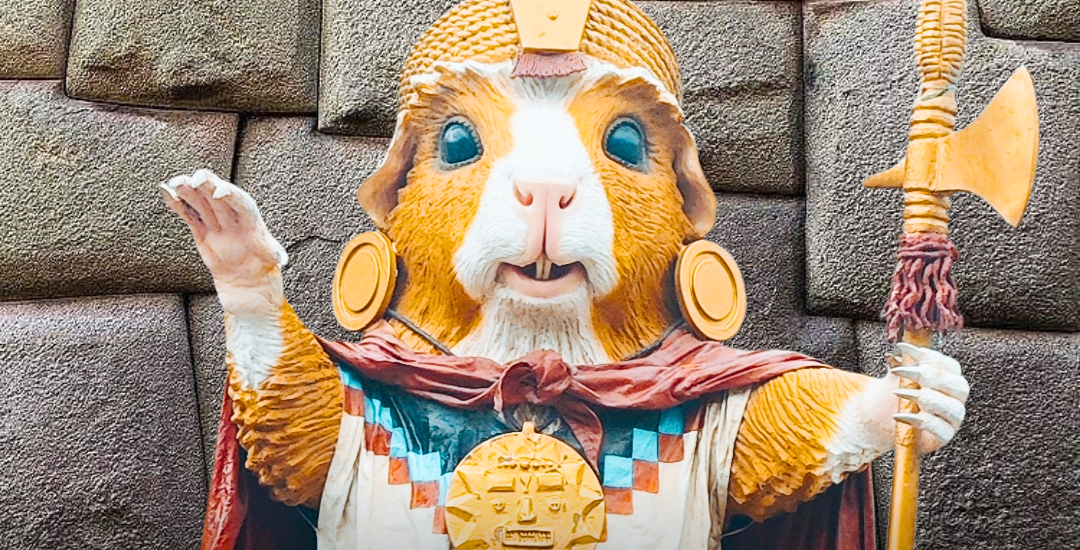Whether in America, Europe, or Asia, you see this fluffy, furry little creature called a guinea pig as a pet. However, in South American countries, such as Ecuador, Bolivia, and Peru guinea pig is considered a delicacy. “That’s cruel”! Or “It’s so cute to eat it” some might say, but, the Andean guinea pig, or “the cuy” as we call it, has a long and ancient tradition in the Peruvian diet.
Stay with us to find out more about this peculiar creature and why we say it’s an important element in Traditional Peruvian cuisine.
Cuy in Peruvian History
Long before Spanish conquerors brought cows, chickens, or pigs to South America, studies show that guinea pigs were domesticated between 2,500 and 3,600 years ago. At the Cerro Sechín temple in the Huaraz region, stratigraphic research revealed abundant guinea pig droppings.
During the first period of the Paracas culture, known as “Cavernas” (250 to 300 B.C.), guinea pig meat was raised, fattened, and consumed. In Inca times, the cuy was an important part of their diet, Incas used them for both commercial and religious purposes.
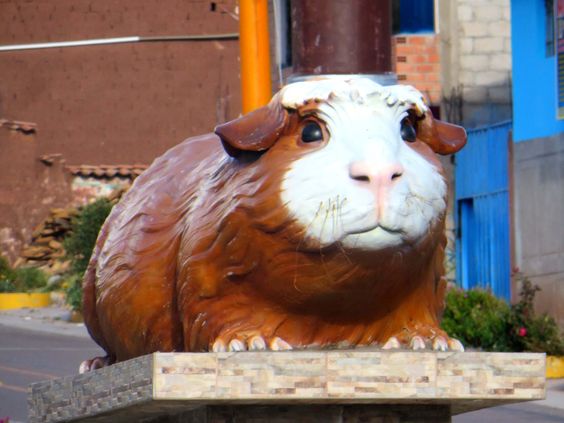
They were used in ceremonial ceremonies and as offerings to the gods. Guinea pigs were considered sacred and thought to have healing properties, and shamans used them in ceremonies to diagnose diseases. Now, perhaps you may be asking why ancient Peruvians called it “cuy”.
Well, the Quechua language is full of onomatopoeia, which is a word that sounds exactly like what it describes. Guinea pigs make the “kew” “kew” sound so that’s where it came from. After this evidence, we can say since ancient times, the Peruvian guinea pig was seen as a source of nutrition and tradition.
Nutritional Value
Nowadays, the guinea pig or cuy is seen as a Peruvian delicacy in our vast cuisine. Although is a simple dish, it can be eaten on special occasions such as weddings, anniversaries, or birthdays. Cuy is called a “superfood” according to studies since it is rich in protein and low in fat. Cuy also has 20.3% protein, and important minerals including iron, calcium, phosphorus, and zinc.
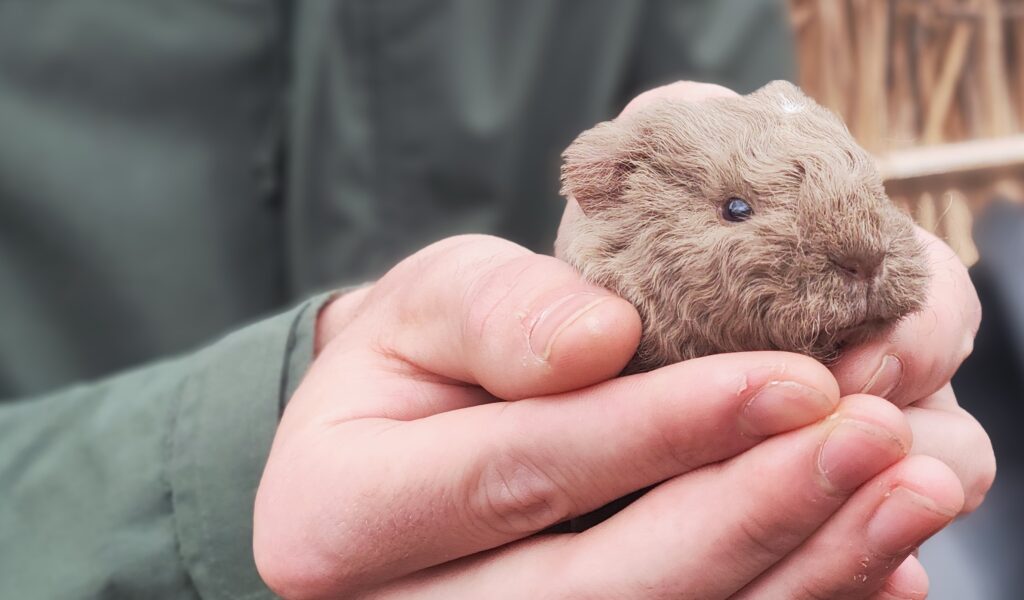
It is beneficial in the fight against anemia and malnutrition since it contains more protein than chicken, beef, lamb, or pork. It has a low cholesterol level, is simple to digest, and is high in good fats that support the growth of brain and cell tissue.
Guinea Pig Dishes
Peruvian culinary landscape is vast, and cuy contributes to broadening its limits. Contemporary preparations by chefs satisfy palates in restaurants worldwide. These chefs are innovating cuy meat with new techniques to keep luring new Peruvian Food adepts. However, in this part, we’ll talk mostly about the most traditional and delicious way to eat this Andean rodent.
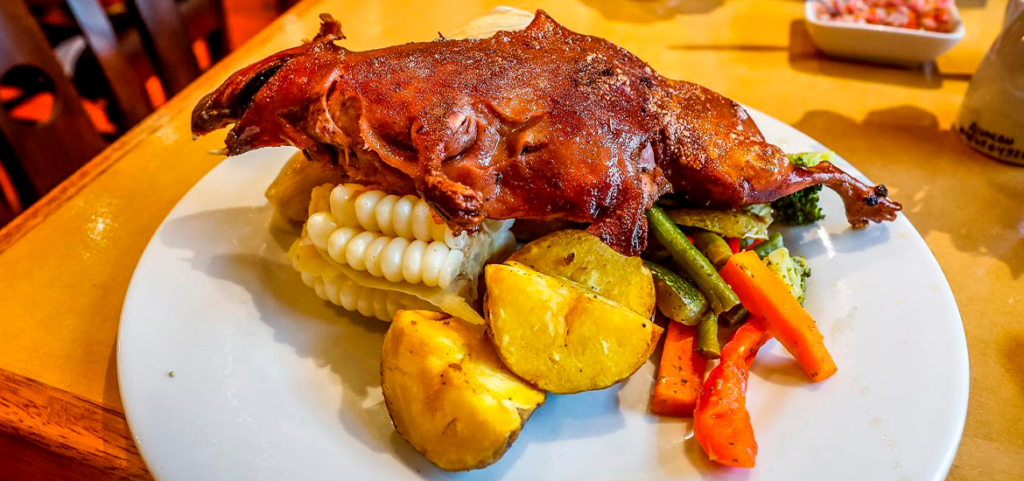
Especially in Peru’s southern region or the high mountain area, locals have numerous ways to prepare cuy. In Cusco for example, we prefer “Cuy al horno” which is oven-roasted cuy served with potatoes and corn.
The key for this cuy dish version is the seasoning, based on Peruvian peppers, garlic, onion, and “huacatay”, a type of Peruvian andean species with distinct flavor and smell.
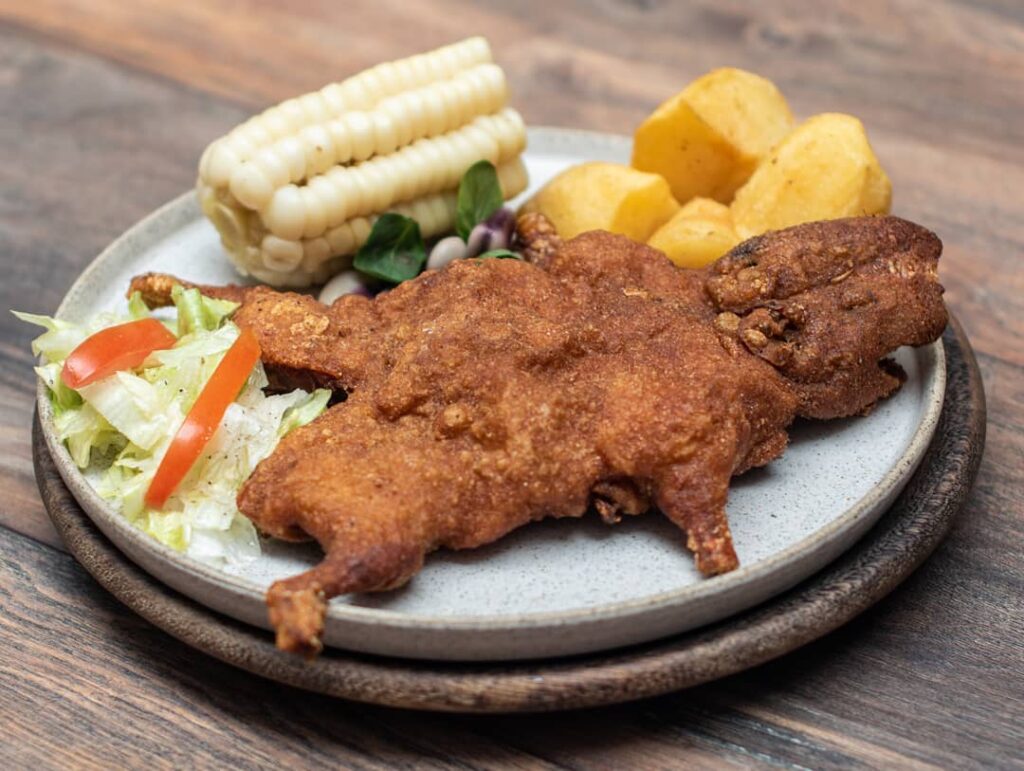
In Arequipa, Cusco’s neighboring city the specialty is “ cuy chactado” or deep-fried guinea pig. The secret to this dish is washing it well and skinning it. After seasoning it, some people expose it to sunlight. The preparation is similar to “cuy al horno” however, in Arequipa, they don’t add huacatay, but instead add some other peppers or cumin.
“Sarza Criolla” (onion salad) or Huacatay sauce is usually offered with the dish together with potatoes and other accompaniments. It is also frequently served with additional accompaniments such as Sweet Potato and Corn.
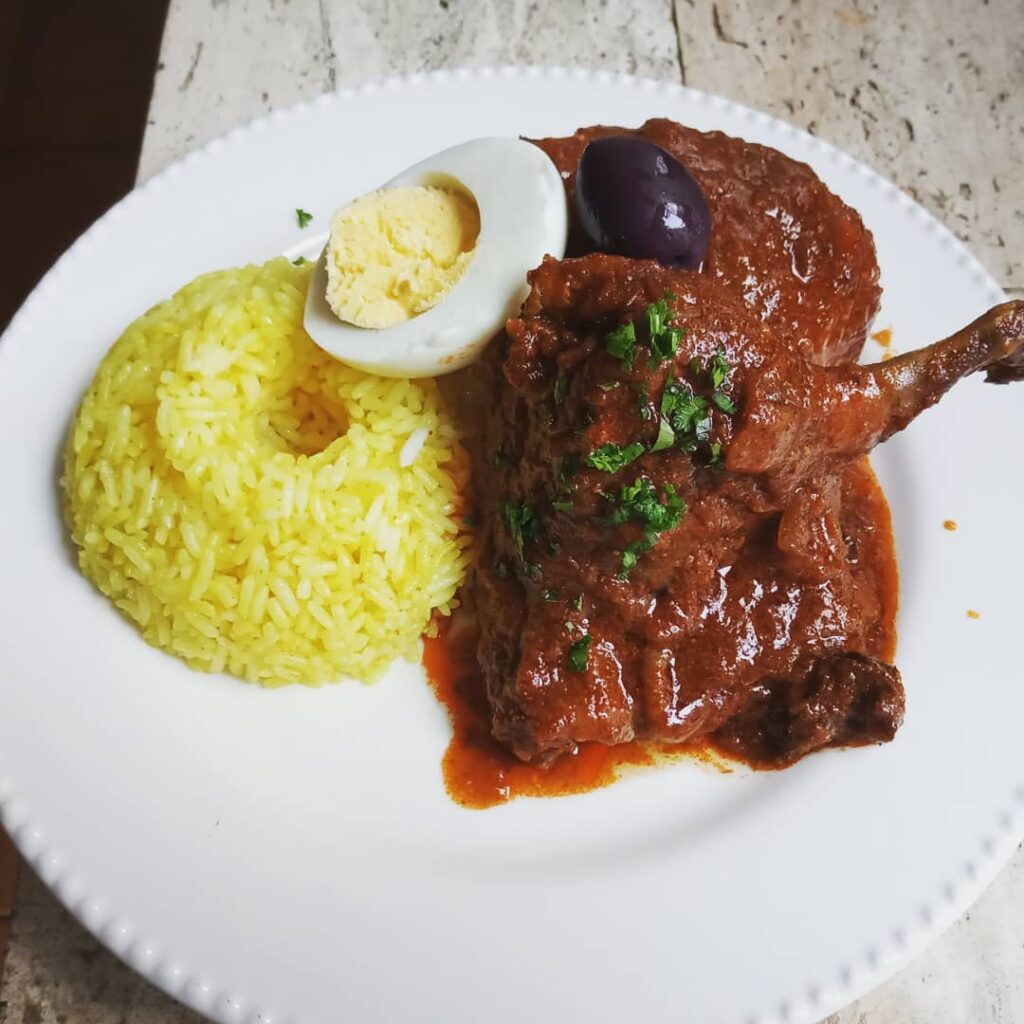
In Peruvian regions such as Huanuco, Ayacucho, Ancash or Junin people there prefer “Picante de cuy” or spicy cuy. This is the oldest recipe we have, the preparation is more difficult than the previous cuy dishes we told you about, but it’ll be worth it when you try it. Just like the name implies, the use of Peruvian spices, peppers, and hot peppers makes this dish unique
Cuy Trivia
Use your hands: It doesn’t work with all meals We Peruvians eat, but we love eating with our hands, so guinea pig is not the exception. When you try it, eat it: Taste the real flavor and suck on every bone, you can thank us later.
Where to Eat It: In regions such as Arequipa or Cusco, you can eat it in the restaurant lists you can see here. In Cusco, festivities like Corpus Christi are one special time when Cusqueños eat a lot of Cuy. In Lamay, a small town in the Sacred Valley, you’ll find a lot of “cuyerias”, cuy restaurants where you can find different cuy dishes

Lucky Cuy: Some people in the Andes believe that raising cuy means a sign of good omens for people living in that home. Some others believe that cuy can attract luck
Doctor Cuy: In some Andean regions, guinea pigs are used in a traditional medicinal method called “limpia de cuy” to detect diseases. In this practice, a healer puts a live guinea pig in a patient’s body, expecting the animal to absorb the patient’s sickness or negative energy.

The guinea pig is then examined since it is thought that its internal organs can provide information about the patient’s condition and aid in the diagnosis of either physical or spiritual problems. In certain Andean communities, this traditional medication is still in use.
Cuy Recipe: Finally, we’d like to share this recipe, try cooking this delicious guinea pig dish with Viagens Machu Picchu. This recipe is the Cusco typical version, “cuy al horno.”
Ingredients:
- – 1 clean guinea pig, split in half
- – Salt to taste
- – Pepper to taste
- – 2 tablespoons ground garlic
- – 2 tablespoons ground cumin
- – 2 tablespoons ground ají panca
- – 2 tablespoons chicha de jora (optional)
- – 2 bay leaves
- – 4 Peruvian potatoes
- – Vegetable oil

Preparation:
- 1. Wash the guinea pig and pat it dry with paper towels.
- 2. In a bowl, mix the salt, pepper, garlic, cumin, ají chili peppers, and chicha de jora.
- 3. Rub the spice mixture all over the guinea pig, inside and out.
- 4. Let it rest for at least 30 minutes.
- 5. Preheat the oven to 180°C (350°F).
- 6. Stuff the guinea pig with bay leaves.
- 7. Tie the legs of the guinea pig with kitchen string.
- 8. Place the guinea pig on an oven-safe tray and brush with oil.
- 9. Roast for 40-50 minutes or until golden and crispy.
- 10. Serve hot and enjoy!.
We really hope you can enjoy cuy when you eat it in a restaurant or if you can make it at home on your trip to Peru. To know more about Peruvian food and culture, choose Viagens Machu Picchu. We are a reputable travel agency and our more than 100,000 clients can confirm that. Contact our consultants, and start living your dreams with us!
Viagens Machu Picchu, journeys that inspire, moments that last.
| Spanish > Viagens Machu Picchu |
| English >Viagens Machu Picchu |
| Portuguese > Viagens Machu Picchu |

